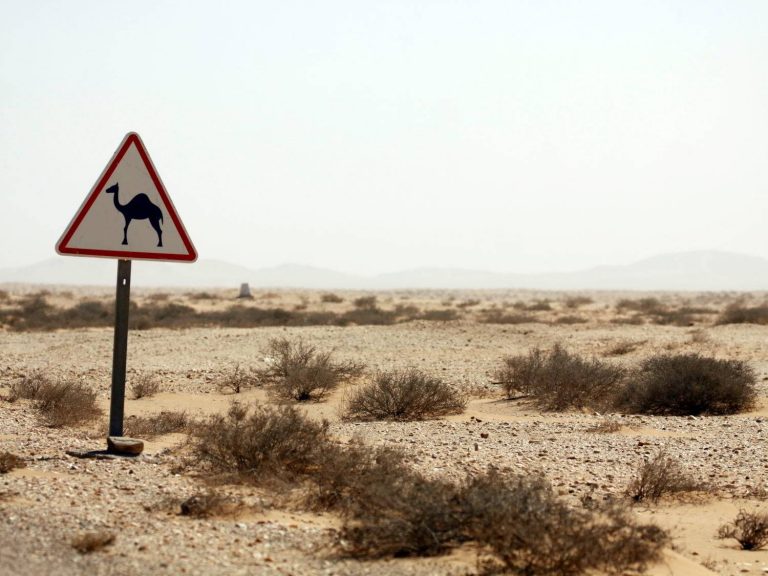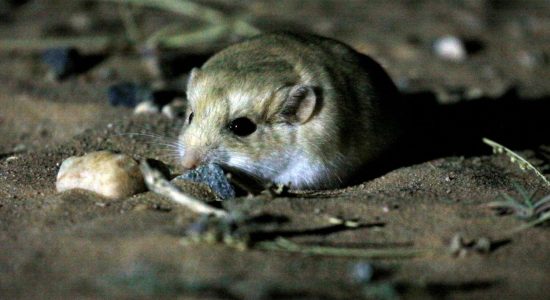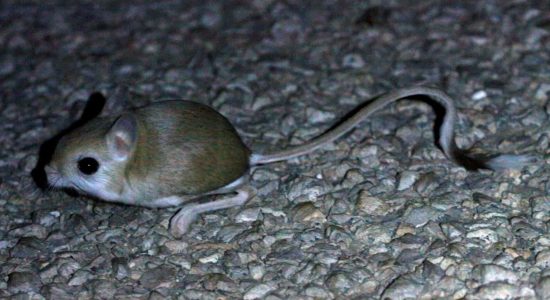Happy New Year! How did you see in the start of the new decade? With fireworks and feasting, a glass of something bubbly in hand and good company, perhaps?
Me, I spent it wrapped in a hotel duvet in a rented Toyota Yaris, parked at the side of a dusty road through the desert of Western Sahara, a country that doesn’t entirely exist, shining a spotlight out into the darkness hoping to catch sight of one of the world’s most elusive predators.
After another wonderful Christmas week in southern Morocco, in the company of a group of suitably festive Wildlife Travellers, Laurie and I headed south, to Dakhla, a coastal town ‘famous’ (so they say) for its rolling Atlantic waves and kite surfing. While the water may have been the draw for those other European faces on our flight, as soon as we landed we turned our back on the ocean, and headed off into the arid interior.

Heading inland from Dakhla is a long, straight road across the desert, to the small ‘town’ of Aousserd, some 270km away. At first glance, it’s very much the road less travelled, primarily used by camel herders, United Nations mine-clearance teams and the Moroccan military. But this road has been described as ‘the finest mammal watching destination in the Western Palearctic’, primarily famous for a suite of charismatic (some might say down right cute) desert-dwelling nocturnal predators. Your chances of coming face to face with a Fennec Fox, a Saharan Striped Polecat or the near-mythical (and immensely handsome) Sand Cat are better here than anywhere else on the planet. Throw in some special birds, including the outside chance of Golden Nightjar and Sudan Golden Sparrow, two rare denizens of the Sahel, and who could resist?

And so, for the fourth time in a week, the night of 31st December saw us driving ‘the road’, spotlights and head-torches at the ready, main beams on, on the hunt for mammals.
And mammals we found. Somewhat scrawny Savannah Hares bounded across in the headlights, and a pair of African Golden Wolf paused briefly to stare at us before loping away into the dark. At the far end of the road, a Rüppell’s Fox, hyperactive with a white-tipped fluffy brush of a tail, circled the car as we ‘squeaked’ to attract his attention. Bouncing out of the darkness came the wonderful Lesser Egyptian Jerboa, snub nosed and long-tailed like a mini Pokemon character. And at the side of the road, another characterful ball of fluff, the delightfully squishy (and equally un-afraid) Fat-tailed Gerbil, which hunkered down between a couple of pebbles and pretended we weren’t there…
And what about that mythical cat that we’d hoped for? Well, at about 4am on New Year’s morning, a pair of reflective eyes shone back at us from the desert, just at the limits of the torch’s reach, before being lost behind a bush. Some concerted ‘pishing’ from the car, and a ghostly-pale cat stood up, turned our way for one last look, and then slipped off into the darkness… the Sand Cat, maintaining its near-mythical status. Seems a pretty good way to start a new decade to me!


Download trip report Wildlife Travel Western Sahara

